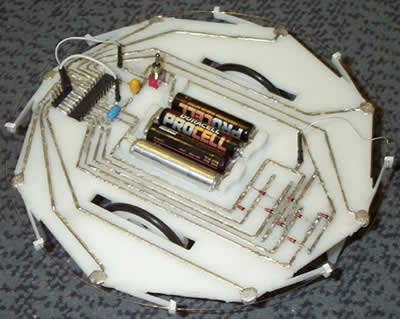 by Flemming Funch by Flemming Funch
Via BoingBoing, an article about a scientist who's working on a 3D printer that can reproduce its own parts, at least most of them.A self-replicating 3D printer that spawns new, improved versions of itself is in development at the University of Bath in the UK.
The "self replicating rapid prototyper" or RepRap could vastly reduce the cost of 3D printers, paving the way for a future where broken objects and spare parts are simply "re-printed" at home. New and unique objects could also be created.
3D printing - also known as "rapid prototyping" - transforms a blueprint on a computer into a real object by building up a succession of layers. The material is bonded by either fusing it with a laser or by using alternating layers of glue. When it first emerged in the mid-1990s, futurists predicted that there would be a 3D printer in every home.
But they currently cost $25,000 (£13,000) and so have not caught on as a household item, says Terry Wohlers, an analyst at Wohlers Associates, a rapid prototyping consulting firm in Fort Collins, Colorado, US. Instead, they are used by industry to develop parts for devices such as aircraft engines, spaceships and hearing aids.
Now Adrian Bowyer hopes to change that by making the first 3D printer capable of fabricating copies of itself, as well as a wealth of everyday objects. He reasons that prices would plummet to around $500 if every machine was capable of building hundreds more at no cost beyond that of the raw materials. And he's planning on making everything freely downloadable. So, if we can avoid that HP somehow gets to control the market for the equivalent of ink cartridges, it sounds like a winner.
For computer languages it is a big milestone when one first succeeds in using the language for writing a compiler that will compile the language itself. So, it is only really full-featured once you can write it in itself. Would be splendid when that really spreads to hardware.
|
|
 by Flemming Funch
by Flemming Funch